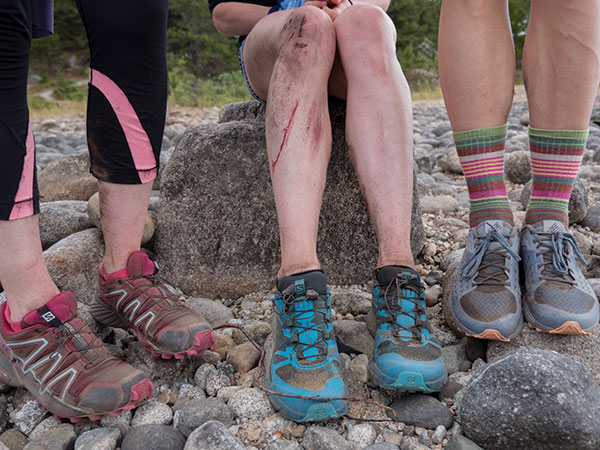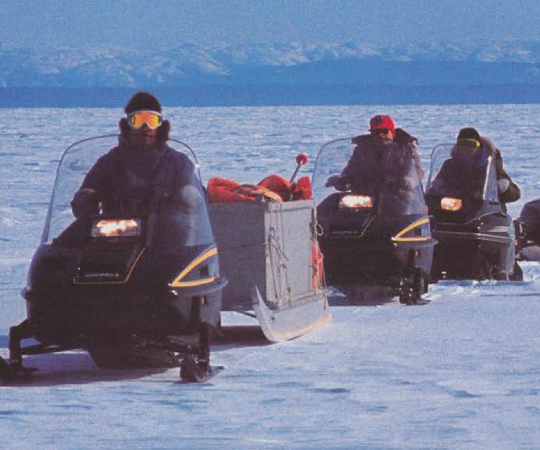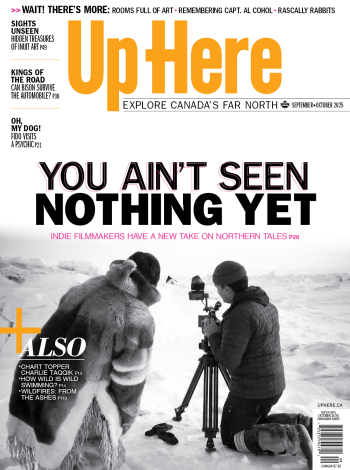In 1898, thousands of gold-obsessed men and women rushed to the Klondike. They came from all over the world, enduring months of travel to reach the gold fields. Most arduous was the slog over the Chilkoot Trail, a 53-kilometre journey between Dyea, Alaska and Bennett Lake, Yukon. They toiled and trekked for weeks through mountain country, carrying a literal tonne of gear with them before rafting down to Dawson City. Some died of exhaustion ferrying their supplies from cache to cache; others perished from starvation.
More than 120 years later, the trail is still in use. But now, hikers enjoy the historic and scenic Chilkoot trek over a few days. An ambitious few also run this trail in a single day—with a floatplane waiting to whisk them back to Whitehorse in time to enjoy a burger and a well-earned beer. Oh, how times have changed.
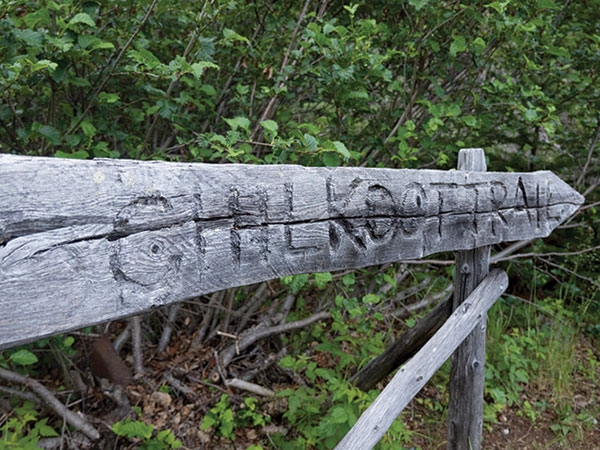
Trail running is an increasingly popular sport that involves running, hiking, climbing, walking, falling and any other means of getting to the other end of a trail as quickly as possible. The Chilkoot Trail run has become a rite of passage for some Yukoners. And why shouldn’t it? Rather than taking time off work to hike with a 40-pound backpack and wet boots, you can easily fit it into a weekend. Plus, it’s competitive: the official-unofficial fastest recorded time for completing the Chilkoot is five hours and 27 minutes, by professional endurance athlete Geoff Roes in 2010. Any time below eight hours is considered impressive, while the average trail runner will take between 10 and 12 hours to complete the trail.
That is our goal when we set out early from Dyea, following the soft single-track up the Taiya River, passing blurry eyed campers sipping their morning coffee and mentally preparing for the hike ahead. The first half of the trail is relatively flat, which makes for quick moving as we run under the canopy of the temperate Alaskan rainforest. The forest floor is covered with thick moss, a product of the wet coastal climate. There’s no shortage of pristine rivers and streams, which we use as convenient water sources (these also guarantee you’ll have soaking wet shoes by the end of the day). The forest is a canvas of green. It’s hard to imagine there were once towns with hotels, saloons, stores and streetlights here. Nature has made quick work of reclaiming the land. Rusting cables, boilers and rotten wood are the only reminders of the trail's gold-rush past.
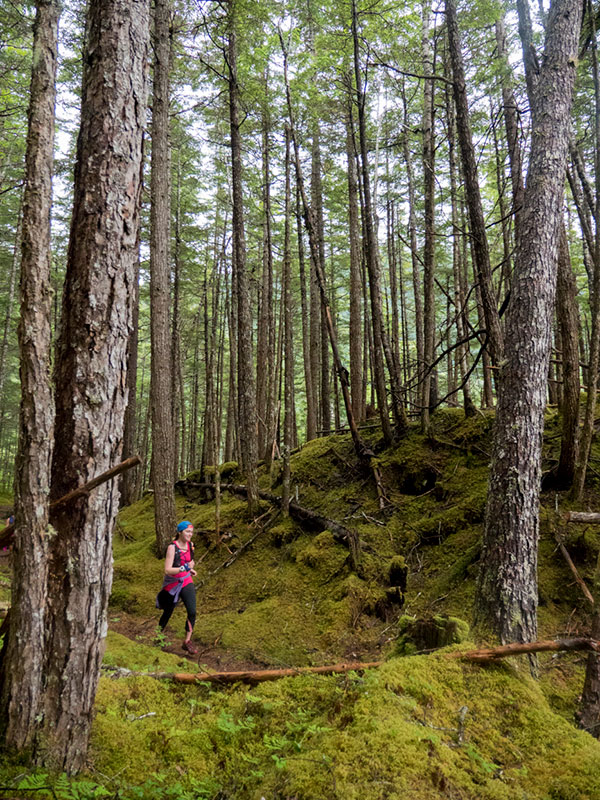
The forest thins and the valley opens up as we reach the Golden Stairs—a steep, snow-patched boulder field. It requires some negotiation to scramble up to the summit. This brings us to the halfway point of the trail. A small, cemented plaque is all that marks the international border. It was here that Canadian Mounties ensured the stampeders had sufficient provisions before letting them continue on. It’s windy and the summit is shrouded in cloud. Just beyond the plaque lies a small warming cabin proudly waving the Canadian flag. We take refuge from the wind for a moment to eat a snack and prepare for the second half of our run.
From the summit, we slide down the snow and begin a long section of undulating track trail. This area is barren due to glacial scouring and is dotted with alpine lakes and mountain streams. It’s something like a lunar landscape. The Canadian side is in the rain shadow of the temperate Alaskan mountains, making it much drier. The clouds soon break and the sun pops out.
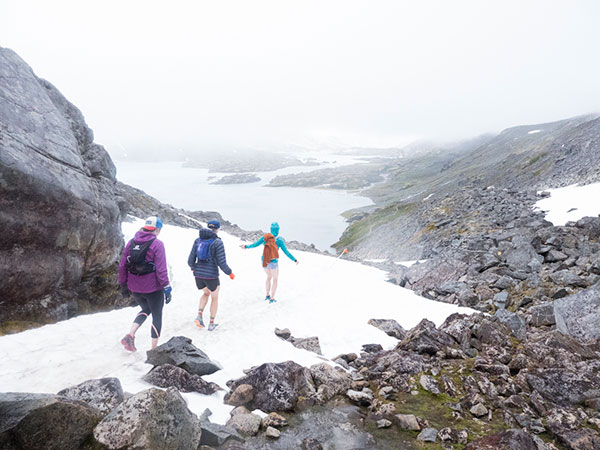
The alpine meadows are filled with vibrantly coloured flowers and the cascading river runs parallel to the narrow trail. It makes for spectacular running. The terrain continues to drop and we dive into boreal forest. There’s a bear advisory here, so we hoot and holler as we run. We come across some hikers who are setting up camp for the night. They stare in disbelief as we dart by. “Did you really start this morning?” asks one suspicious camper. Though they see this single-day trip as needlessly demanding, the thought of carrying a massive pack for multiple days sounds, to us, equally tiring.

We continue down the trail, through the forest with glimpses of Lindeman Lake, before finally arriving at the windy shores of Bennett Lake. With dirt (and some blood) coating our sweaty legs, we remove our shoes and chill our toes in the glacial waters.
Within minutes of finishing our run and devouring the remaining morsels of our food, we hear the faint hum of the plane. After a 40-minute flight over the Yukon’s rugged mountains, we’re sitting in a hotel bar in Whitehorse with a beer to cap off an epic day. We start planning for the next adventure.
